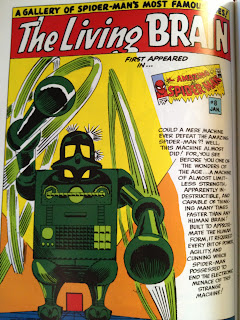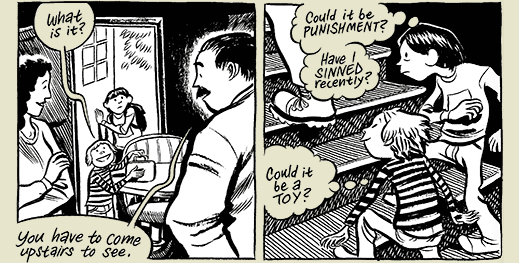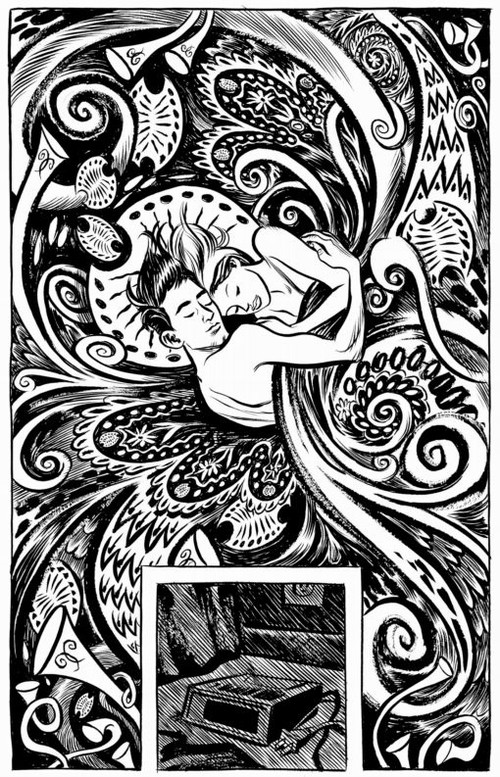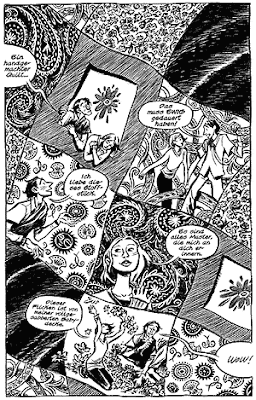Today I’m looking at the first 4 Volumes of Marvel
Masterworks: The Amazing Spider Man, Collecting Amazing Fantasy #15, The
Amazing Spider-Man #1-40, and The Amazing Spider-Man Annual #1-2.
Upon first reading these stories, I was less than impressed.
I couldn’t get past the art. My first Spider-Man comics were from the John
Romita Era, so I kept holding the comics to those standards.
Ah yes. Fond memories...
Eventually I was able to read the stories without bias. I saw Ditko's work for what it was: simple, effective art. Without further ado, onto the plot!
Peter Parker is a Nerdy Teenager at Midtown High in Forest
Hills, New York. One Day he goes to a Science exhibit with experiments in
radiation and is bitten by a spider that was accidentally hit with radiation.
Instead of giving him cancer, this spider bite gives him superpowers. He then
does what any sensible person does: Try to make money off of this. First he
wrestles Crusher Hogan for $100. Then he lands a gig showing off on the Ed
Sullivan Show. At this point, Peter is clearly in this for the fame and
fortune. But when a security guard is chases a burglar, Spiderman valiantly…
does nothing.
In a twist of Irony (That we all probably have engraved in
our brains) the same guy that robbed the studio later burgles the Parker
residence and kills Peter’s Uncle Ben. It is then Peter learns that with great power there must also come great
responsibility (unless you are selling your marriage to the devil apparently,
but that’s a different, more stupid story).
I could have put 1 of 1000 jokes here, but I couldn't choose.
I just keep asking myself why this story even exists.
Beyond that, The Amazing Spider-Man had several developing
stories, despite each issue being a stand-alone story. Continuity plays greatly
into many stories without getting confusing. Some plot elements or details for
some of these arcs are laid issues in advance such as Aunt May’s blood
transfusion or Norman Osborn’s cameo 14 issues before his formal introduction.
One major story arc that lasted artist Steve Ditko’s entire run (the resolution
of that arc was covered in the first two stories drawn by John Romita) was the
mystery pertaining to the identity of the Green Goblin. It is a story arc that
lasts from issue 14 all the way to issue 40. Another famous story arc was the
Master Planner story, where Spider-Man had to race against the clock to save
his aunt from dying of radiation poisoning (That she got from a blood
transfusion).
If you haven’t guessed by now, our hero is Peter Parker (who
is secretly the Amazing Spider-Man). Other supporting cast include His Aunt May
(Who is elderly) and his Uncle Ben (Who is dead). We also have Peter’s peers,
Flash Thompson, Liz Allen, and later Harry Osborn and Gwen Stacey. Mary Jane
Watson (a girl Aunt May tries to hook Peter up with) is also present with her
face always obscured. At The Daily Bugle we have J. Jonah Jameson, Betty Brant,
and Frederick Foswell. Many of these characters have their own arcs and side
stories. They are fleshed out, having their own goals and ambitions. And that’s
not even counting the villains.
Many of Spider-Man’s greatest villains were created in this
first era, when Ditko or Romita were behind the Artwork. In the first 4 Marvel
Masterworks collection we were introduced to many Iconic villains: The
Chameleon, The Vulture, Doctor Octopus, The Sandman, The Lizard, Electro,
Mysterio, The Green Goblin, Kraven the Hunter, and The Scorpion. Even Doctor
Doom (Nemesis of the Fantastic 4) faces off against Spider-Man.
Other great villains include The Big Man, The Enforcers, The
Spider Slayers, the Molten Man, and Professor Stromm. While these baddies
aren’t as famous, they have become reoccurring villains or have impacted the
Spider-Man Mythos in a great way. The Big Man (renamed Mr. Big) had an
important (mostly posthumous) role in Ultimate Spider-Man. Dr. Stromm even got
a role in the first spider man movie.
Then there are villains such as the Living Brain, the
Meteor, The Cat and Just a Guy named Joe. These antagonists are probably best
left forgotten.
Lies. That's a robot, its not alive. And its not a brain.
Themes for the Amazing Spider-Man are pretty
straightforward. Teenage hardships are a common occurrence in these early
stories as well as the pressures of life in general. Peter has an Aunt he needs
to care for, High School and later College life to deal with, Romantic tension,
Working for the Daily Bugle, etc. Despite later writers seem to think, writing
Spiderman isn’t simply writing these pressures as the world being out to get
him and many miss the fact that Peter Parker is a very determined as a
character. He gets buried under a pile of Lab Equipment; he struggles to free
himself, persevering after 5 tense pages. That is an element Missing from many
modern Spider-Man stories (I’m looking at you, One More Day)
Why yes, I am still beating this dead horse.
Never really had a chance to vent about this 'till now.
Stan Lee, Steve Ditko, and Jack Kirby were the creators of
Spider-Man, with Stan and Steve being the first writer and artist for the comic,
respectively. Today Stan Lee is a personality in and of himself. He cameos in
every Marvel Movie. Other creations attributed to him include the Fantastic
Four, The Hulk, The X-Men and Daredevil, though he is hardly the sole creator
of these works. On the other hand, Steve Ditko is less known to pop culture. He
was the creator and artist for Doctor Strange. After leaving Marvel, Ditko went
on to make the Question and the 2nd Blue Beetle for Charlton Comics,
two characters who later became heroes in the DC Universe and were the
inspiration for Rorschach and Nite Owl from Alan Moore’s Watchmen.
Text and Art blend well rather than one becoming dominant
over the other. The text narration can get annoying at times, but it never
feels as if there is too much text just for the sake of text. As for the art,
it is simple yet highly emotive. While one might hesitate to call the art
outright cartoonish, Steve Ditko’s art certainly strays closer to the
cartoonish than later Spider-Man artists. Like I said above, I wasn’t a fan of
his art at first. Compared to Romita’s artwork, I felt as if Ditko’s art was
amateur in comparison. It didn’t match the realism of Romita’s work. But I
learned to appreciate Ditko’s style as it captures the tone of these early
issues.
While on the subject of Ditko, a distinctive Ditko element
works well in these stories. I personally am ambivalent to the philosophies of
Objectivism. While some aspects are a bit too conservative, the Idea of a man
being able to persist in the face of adversity is relatable to anyone. While
I’m unsure if it is an Objectivist thought, it is used often in these stories,
Notably Doctor Octopus’ first appearance and the Master Planer story arc.
On the down side, these stories haven’t aged that well.
Little things, like communist spies, the slang used by the characters, and references
to 60’s pop culture (such as Ed Sullivan and Soupy Sales) date the comic
severely. However the core stories themselves are strong enough that with a
little retooling they can be enjoyed by modern readers.
The Old 1960s Version
The New 2000s Version
For that, I recommend
Marvel Age Spider-Man for younger Spider-Man fans and people who want to read
the classics told in a modern setting. Personally though, I prefer the older
stuff.
The Amazing Spider-Man had a profound impact on not only
comics history, but pop culture as a whole. If Stan’s story on Spider-Man’s
creation is even half true, then Spiderman was one of the first superheroes to
deal with problems relatable to the reader. Today, Spider-Man is an icon.



































